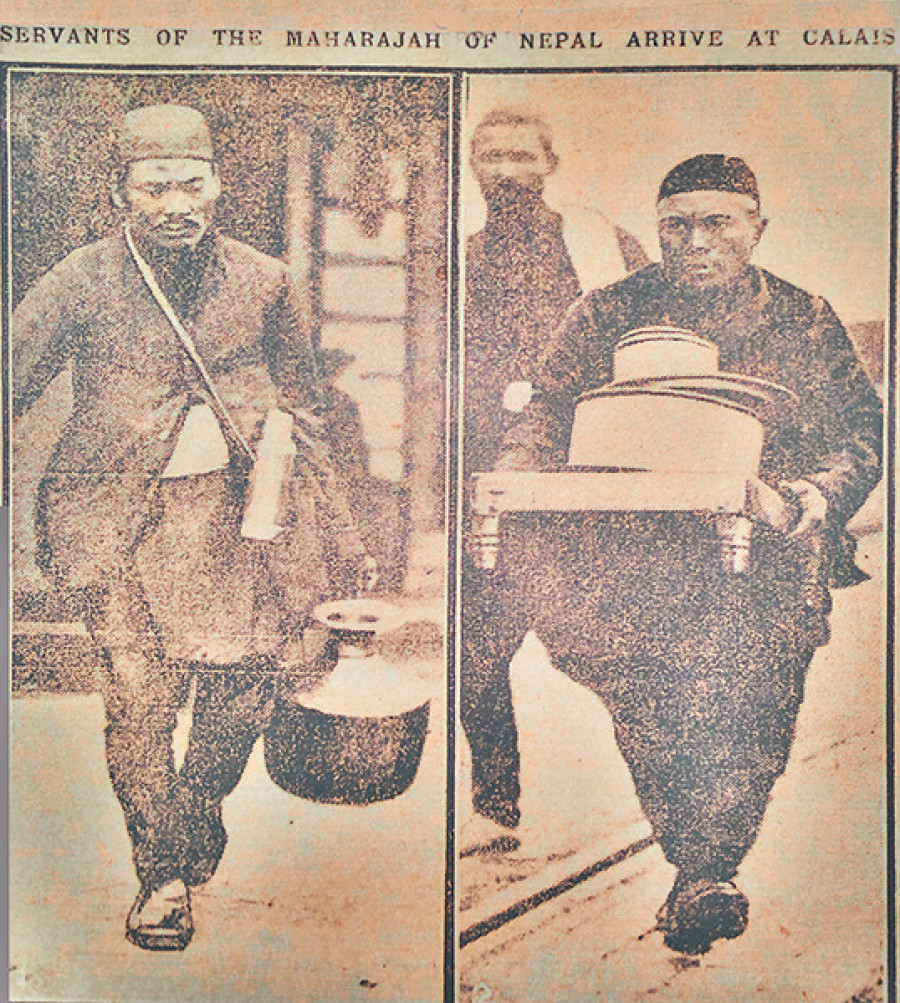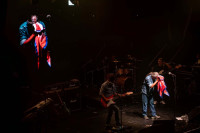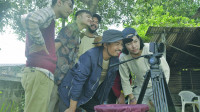Entertainment
Servants of the Maharajah of Nepal
You might have heard about the fanfare surrounding Jung Bahadur Rana and Chandra Sumsher’s visits to Europe, but did you know that the British press were equally intrigued by the army of “servants” that accompanied them abroad?
Sanjit Bhakta Pradhananga
You might have heard about the fanfare surrounding Jung Bahadur Rana and Chandra Sumsher’s visits to Europe, but did you know that the British press were equally intrigued by the army of “servants” that accompanied them abroad? When Chandra Sumsher arrived in Dover on May 8, 1908, the Daily Mirror published images of not just the “Maharajah of Nepal” arriving at the port, but also his “picturesque native servants” carrying milk and cooking utensils.
This interesting snippet from history—even if rife with “orientalist gaze”—and about 200 other images and paintings are currently on display at the Nepal Art Council (NAC) in the Capital, marking the Bicentenary of bilateral relationship between Nepal and Britain.
Starting off with a portrait of Prithivi Narayan Shah and a translation of his Divya Upadesh, the exhibition charts the course of the two centuries of bilateral relations between the two countries curated through images, paintings and clippings of key milestone historic events. But because the relationship of the then British Empire with Nepal was largely limited to the heredity ruling class of the country, a sizeable initial portion of the current exhibition in turn revolves around photographs of large hunting parties in the Tarai and the pomp of Rana-era buildings and lifestyle.
In between the lines, however, are plenty of hidden gems for history aficionados to pore over. The exhibit includes a collection of rare books, including the Account of Nepaul by Colonel William Fritzpatrick; two original historical paintings by Hari Prasad Sharma; several of Henry Oldfield’s impressions of Nepal dated back to 1850s; and the first ever photographs taken of Nepal by Clarence Comyn Taylor in between 1863-65.
Taking up the entire first floor of the NAC, the exhibition charts a layered history that the two countries have shared since the signing of the Sugauli Treaty in 1816, including impressions of both the Anglo-Nepal and Nepali soldiers fighting in the Great War. With a mix of both known images and rare-gems like an audio-recording of the Nepaulese Polka which was composed by the Austrian romantic composer Johan Strauss in honour of Jung Bahadur Rana, the exhibit also has several interactive features including a corner where visitors can take selfies with a life-size cut out of Jang Bahadur.
The Nepal-Britain Bicenteranry Exhibition (BIEX) will be on display at the NAC until April 30, before moving venues to the Lazimpat branch of Standard Chartered Bank for another 10 days.




 13.12°C Kathmandu
13.12°C Kathmandu










